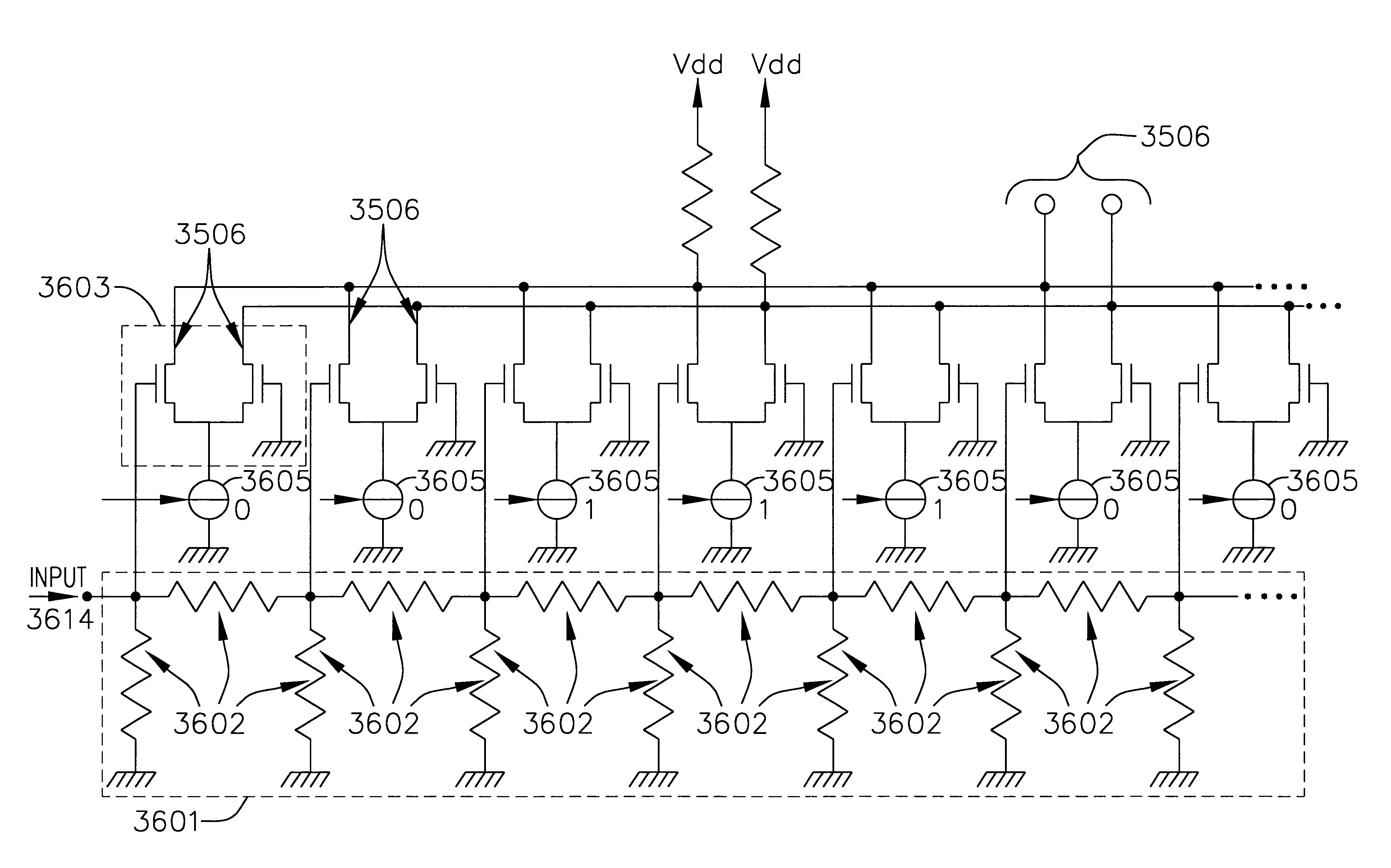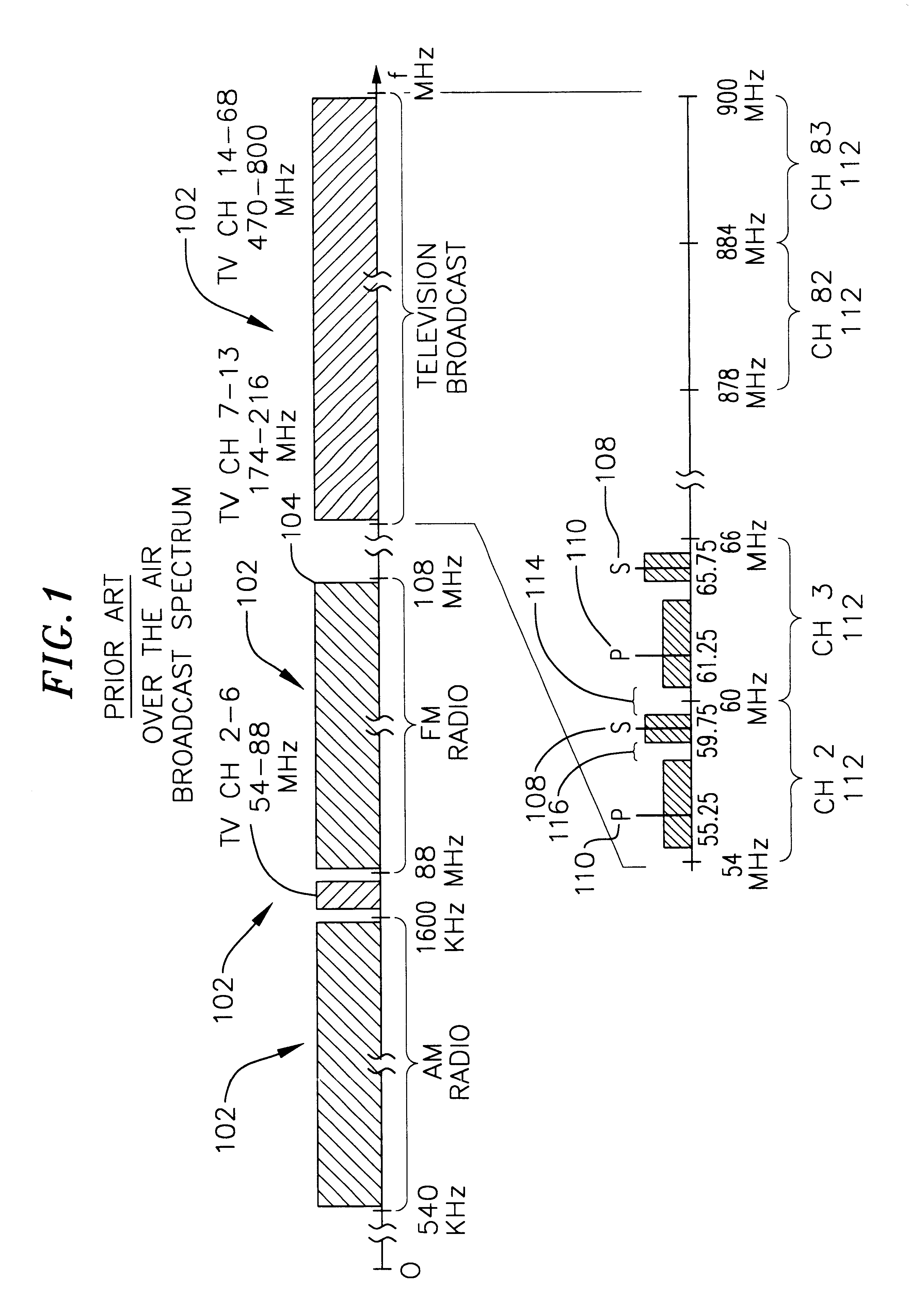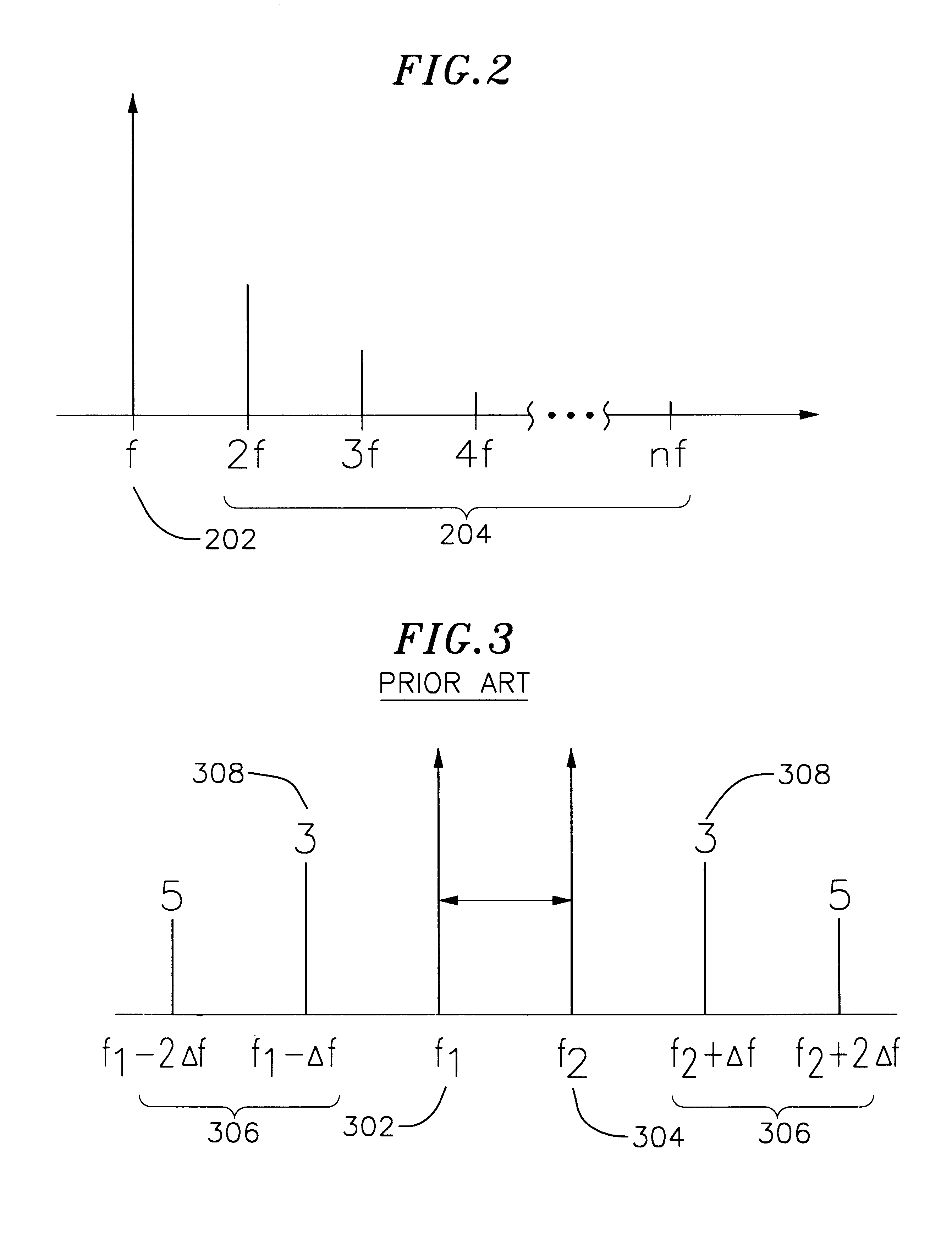Integrated switchless programmable attenuator and low noise amplifier
a low-noise amplifier and switchless technology, applied in the field of receiver circuits, can solve the problems of difficult to account for radio signals, difficult to design a receiver, and distortion of captured signals,
- Summary
- Abstract
- Description
- Claims
- Application Information
AI Technical Summary
Benefits of technology
Problems solved by technology
Method used
Image
Examples
Embodiment Construction
FIG. 1 is an illustration of a portion of the radio frequency spectrum allocations by the FCC. Transmission over a given media occurs at any one of a given range of frequencies that are suitable for transmission through a medium. A set of frequencies available for transmission over a medium are divided into frequency bands 102. Frequency bands are typically allocations of frequencies for certain types of transmission. For example FM radio broadcasts, FM being a type of modulation, is broadcast on the band of frequencies from 88 MHz to 108 MHz 104. Amplitude modulation (AM), another type of modulation, is allocated the frequency band of 540 kHz to 1,600 kHz 106. The frequency band for a type of transmission is typically subdivided into a number of channels. A channel 112 is a convenient way to refer to a range of frequencies allocated to a single broadcast station. A station broadcasting on a given channel may transmit one or more radio frequency (RF) signals within this band to conv...
PUM
 Login to View More
Login to View More Abstract
Description
Claims
Application Information
 Login to View More
Login to View More - R&D
- Intellectual Property
- Life Sciences
- Materials
- Tech Scout
- Unparalleled Data Quality
- Higher Quality Content
- 60% Fewer Hallucinations
Browse by: Latest US Patents, China's latest patents, Technical Efficacy Thesaurus, Application Domain, Technology Topic, Popular Technical Reports.
© 2025 PatSnap. All rights reserved.Legal|Privacy policy|Modern Slavery Act Transparency Statement|Sitemap|About US| Contact US: help@patsnap.com



